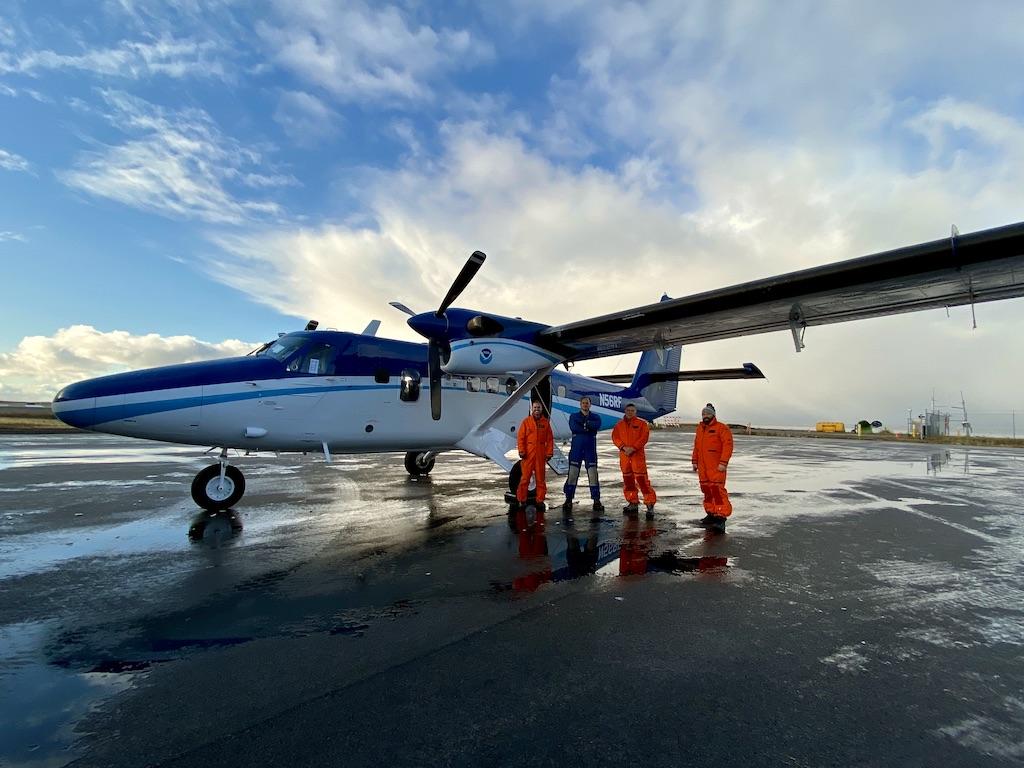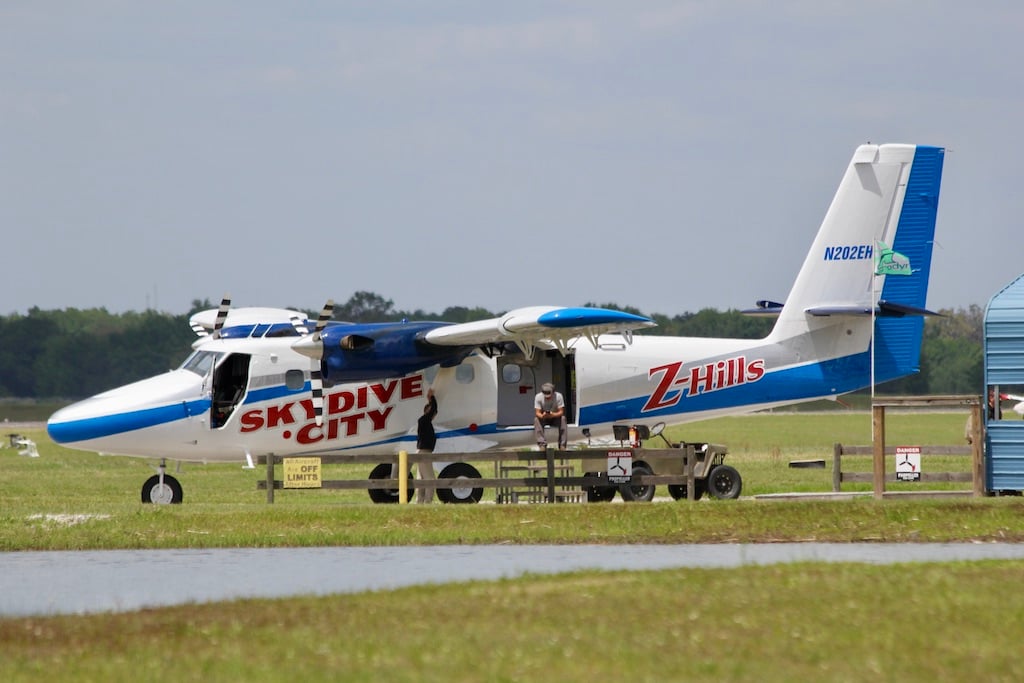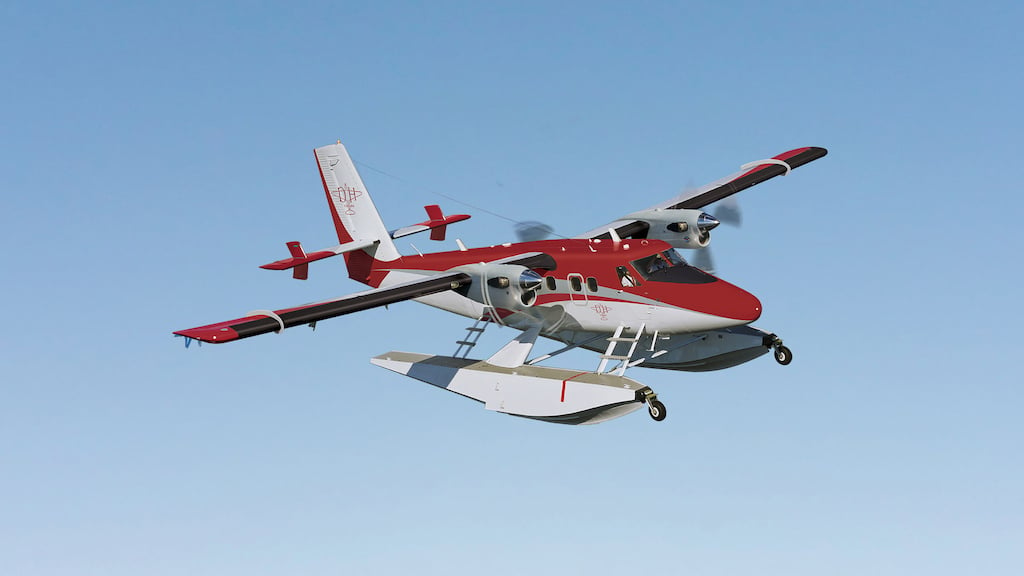
One of the four DHC-6-300s operated by the National Oceanic and Atmospheric Administration, which uses the Twin Otter to conduct aerial surveys.
Born in the 1960s, discontinued for two decades and resurrected in the early 2000s, the De Havilland Canada DHC-6 Twin Otter has remained a valued workhorse for operators through a succession of corporate overseers.
De Havilland Canada produced the twin turboprop in Series 1-3 iterations from 1965 to 1988: the Series 1, powered by two 550-shp Pratt & Whitney Canada PT6A-20 engines; the Series 200, with a lengthened nose and additional baggage capacity; and the Series 300, with 620-shp PT6A-27A engines, according to a BAE Systems history of the aircraft.
The Canadian manufacturer built 844 Twin Otters, including 614 Series 300 models, at its Downsview site in Toronto before production ended in 1988. British Columbia-based Viking Air resurrected the aircraft as the DHC-6 Series 400 in 2008.
The National Oceanic and Atmospheric Administration (NOAA), a branch of the U.S. Commerce Department, operates four DHC-6-300 Twin Otters to conduct aerial surveys of marine mammals and to support hydrological, remote-sensing, air-chemistry and emergency-response programs.
“Twin Otters are among the agency’s most versatile aircraft,” NOAA says. “With an endurance of 4-6 hr. at survey speeds, the Twin Otter is more than capable of covering over 600+ nm of low-altitude survey in a given flight at max fuel loads. Normal crew size is two pilots with a cabin capable of seating six people with smaller science equipment installed.”
Trans Maldivian Airways (TMA) operates 65 Twin Otter seaplanes to transport passengers in the Maldives, a nation of islands in the Indian Ocean.
“The versatility of this aircraft makes it perform very well on wheels, skis or floats,” TMA says. “The latter, along with [its] useful short-takeoff-and-landing [STOL] performance, makes it the ideal aircraft for the 1,190-island archipelago of the Maldives.”
DHC Comes Full Circle

Founded in 1928, DHC was a subsidiary of a British company until 1974, when the Canadian government purchased the manufacturer from Hawker Siddeley Aviation. Twelve years later, the Ottawa government sold DHC to Boeing, which then was competing with Airbus to supply airliners to Air Canada. Production of the DHC-6 ended under Boeing’s parentage in 1988.
Canadian manufacturer Bombardier and the provincial government of Ontario purchased DHC from Boeing in 1992. Bombardier focused on building DHC’s Dash-8 twin turboprop regional airliner, later called the Q400. In 2006, Canada’s Viking Air purchased type certificates from Bombardier for discontinued De Havilland Canada designs, including the DHC-1 through DHC-7.
Series 400 Launched

Viking Air restarted production of the Twin Otter with the fourth-generation DHC-6 Series 400 in 2008 and delivered the first production aircraft to launch customer Zimex Aviation of Switzerland in 2010.
Accommodating up to 19 passengers and reconfigurable for lesser seats or mixed passenger and cargo operations, the Series 400 model is powered by 750-shp PT6A-34 engines flat-rated to 620 hp. Its cockpit features a four-display Honeywell Primus Apex avionics suite. Known for its STOL capability, the DHC-6-400 needs 1,200 ft. to reach 50 ft. AGL and 1,050 ft. to land.
Ikhana Aircraft Services of Murrieta, California, now owned by Aevex Aerospace, obtained FAA supplemental type certification of the RWMI DHC-6-300HG, an increased payload version of the DHC-6-300, to Part 23 commuter standard in 2018. The -300HG uses the full 750-shp output of the basic aircraft’s PT6A-34 engines and increases max takeoff weight to 14,000 lb. from 12,500 lb.
Ikhana/Aevex also produces re-lifed zero-timed wings and fuselages plus the Twin Otter X2, a zero timed, upgraded DHC-6-200.
Bombardier’s sale of the Dash-8 program to Longview Aviation Capital in 2019 reunited the product line of the original DHC. Through its subsidiaries, which included Viking Air, Longview had acquired type certificates for the Twin Otter and DHC-1 through DHC-8 turboprops, as well as for the Canadair CL-215, CL-215T and CL-415 firefighting aircraft and the Short Brothers Skyvan, 330, 360 and C-23 Sherpa.
In February 2022, Longview Aviation Capital announced that De Havilland Aircraft of Canada Ltd. would be the new operating brand of its portfolio companies. De Havilland Aircraft announced in September 2022 that it would build a new final assembly facility near Calgary for the DHC-6, the Dash-8-400 and the new DHC-515 Firefighter.
In-Service Fleet

As of August, the Aviation Week Fleet Discovery Database counted an in-service fleet of 343 DHC-6-100/200/300s, with another 95 stored, parked or in the possession of a third party. There were 104 active DHC-6-400s, with another 61 stored, parked or in the hands of a third party.
The North America and Asia-Pacific regions, with 119 and 106 aircraft, respectively, have the most early-model DHC-6s in operation. The Asia-Pacific region has the most DHC-6-400s in service, with 41 operating, followed by Latin America (17), Eastern Europe (15) and the Middle East (13).
The International Aircraft Dealers Association’s Aircraft Exchange website listed two DHC-6-400s and one DHC-6-300 for sale in August.
The average retail price for a midtime, average 1970 DHC-6-300 is $1.9 million, according to the Aircraft Bluebook. The average retail price of a 1988 model is $3.45 million.
Twin Otter Classic 300-G

De Havilland Canada launched the fifth-generation DHC-6 Twin Otter Classic 300-G at the Paris Air Show in June 2023, at the time claiming purchase agreements and letters of intent for 45 aircraft.
Scheduled to enter service in 2025, the latest Twin Otter variant is powered by standard PT6A-27 or optional PT6A-34 engines and comes with the Garmin G1000 NXi avionics suite, a redesigned interior and windows, and more payload and range—flying to 803 nm (924 mi.) max range with 2,270 lb. of payload.
The DHC-6 Classic 300-G is considered competition for the passenger version of the Cessna SkyCourier, which entered service in 2023.
BCA welcomes comment and insight from aircraft dealers and brokers for its monthly 20/Twenty pre-owned aircraft market feature. The focus aircraft for September 2024 is the Daher TBM 700 and for October the Embraer Legacy 500. To participate, contact [email protected].





